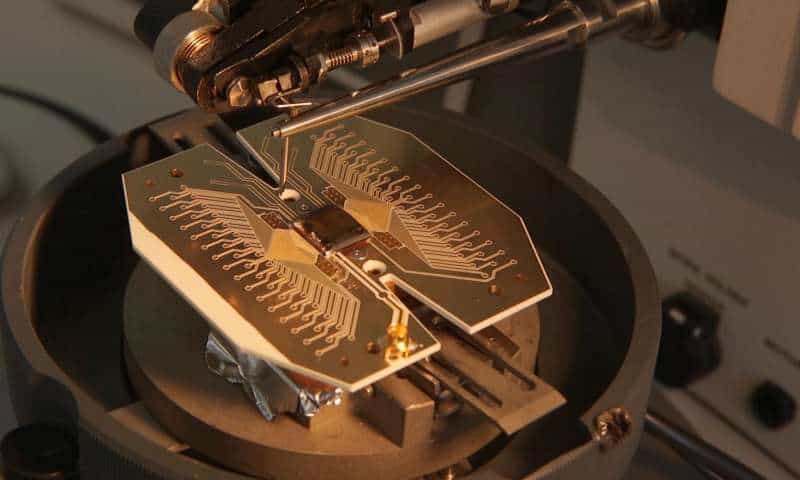
Quantum computers promise to revolutionize countless fields of science and industry from drug research to astrophysics to climate. Though progress so far is impressive, quantum computers nowadays are unstable as the field is still in its infancy. One of challenge is building a machine with enough qubits so the performance of the quantum computer can exceed that of a conventional architecture computer. Now, an international team of physicists have proposed a novel blueprint for a quantum computer that could be comprised of anywhere from a couple to billions of qubits (quantum bits) thanks to its modular design.
The plan for a large-scale quantum computer — it could be as big as a football field
Classical computers, like your smartphone or laptop, work with a fundamental unit of information called a ‘bit’ whose value can either be ‘1’ or ‘0. A quantum system, however, can assign information the values ‘1’, ‘0’ or both at the same time. It’s akin to saying a switch is both on and off at the same time which in day to day life makes absolutely no sense, but in the quantum domain few things are reasonable from our perspective. This ambiguity is possible due to the superposition of states and if we could leverage this quantum phenomenon information can be computer in parallel. Two qubits can perform operations on four values, three on eight values and so on in powers of two. As such, a quantum computer could be billions of times faster than a normal silicon computer built on a von Neumann architecture.
Scientists are struggling, however, to make machines with more than a dozen qubits because decoherence causes the qubits to lose their superposition. They become regular 1s and 0s, and in this case a 10bit machine worth millions is worthless. D-Wave, a private company who’s sold quantum machines to the likes of NASA and Google, claims it now offers a 2,000 qubit machine but that’s misleading, according to many experts who believe D-Wave’s quantum annealing approach doesn’t actually solve problems like a quantum computer ought to.
The challenges of building a practical quantum computer are immense, but a group of scientists says they have a good plan. The collaboration consists of specialists from Google, Denmark’s Aarhus University, the Riken research institute in Japan, the University of Sussex in the U.K., and the University of Siegen in Germany.
“We’re using some new concepts that tremendously simplify how to build a quantum computer,” said Winfried Hensinger who is the director of the Ion Quantum Technology Group at the University of Sussex in the United Kingdom.
The quantum computers shown thus far use ion traps comprised of lasers that cool ions in an already cryogenic environment to reach almost absolute zero. At this temperature molecules almost common to a halt (temperature is a measure of molecular agitation) and weird quantum effects come into effects — that’s what we want. But this sort of architecture is extremely expensive to maintain and involves machines the size of a car to run a couple of qubits.
That might sound very disappointing but this is how science works. Some of the first digital computers in the world from the 40s only had a couple of bits of memory and were the size of a room. Look at where we are now.
“It is the Holy Grail of science, really, to build a quantum computer,” Hensinger told The Independent.
“And we are now publishing the actual nuts-and-bolts construction plan for a large-scale quantum computer,” he added.
What Hensinger and colleagues are proposing is radically different from previous approaches. Their blueprint details the plan for the construction of a modular quantum computer that uses microwaves and the application of voltages instead of lasers to make the gate system work.
In the new architecture, junctions — each consisting of four electrodes that look like a crossroad when they meet — control the movement of the charged ions.
The microwaves entangle ions in pairs, meaning a change in state in one ion immediately causes a change in the entangled particle, To push information from one module to the next, electric fields are used to push the ions.
When the ion are first entangled, the 1s or 0s are encoded but we don’t know their values. The value is determined once the ion reaches the detection zone where a laser reads it.
Everything can run at room temperature unlike the superconducting models previously demonstrated.
The physicists envision in a paper published in Science Advances modules made of 2.2 million junctions. Each module measures 4.3 meters (14 ft.) on a side and thousands of such modules could be connected to one another. A thousand modules, for instance, would occupy a whole football field and have 2 billion ions or just as many qubits.
Next, the team plans on putting their blueprint to good use with a functional prototype. Such a machine made as described in this paper could be ready in two years. Meanwhile, industry partners are invited to collaborate seeing how the full scale quantum machine could cost around $100 million.
Theory and practice don’t always come together. We can only cross our fingers this design will work as intended. If so, it would truly be a game changer for science.
If you’d like to learn more about this project and quantum computing in general, check out Dr. Hensinger’s one hour talk below.






